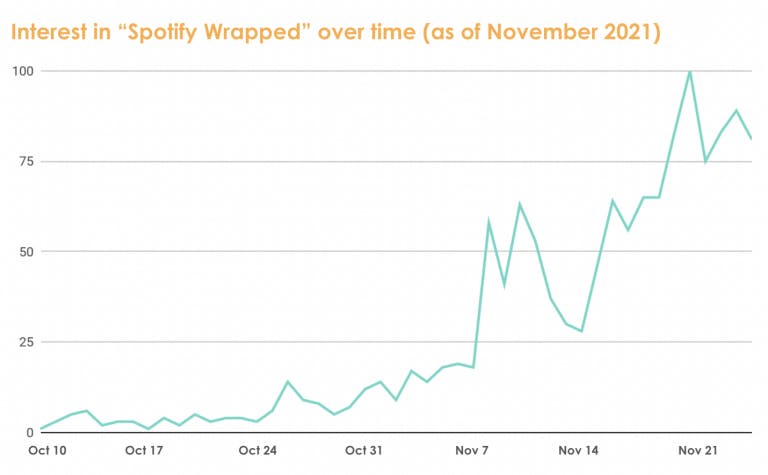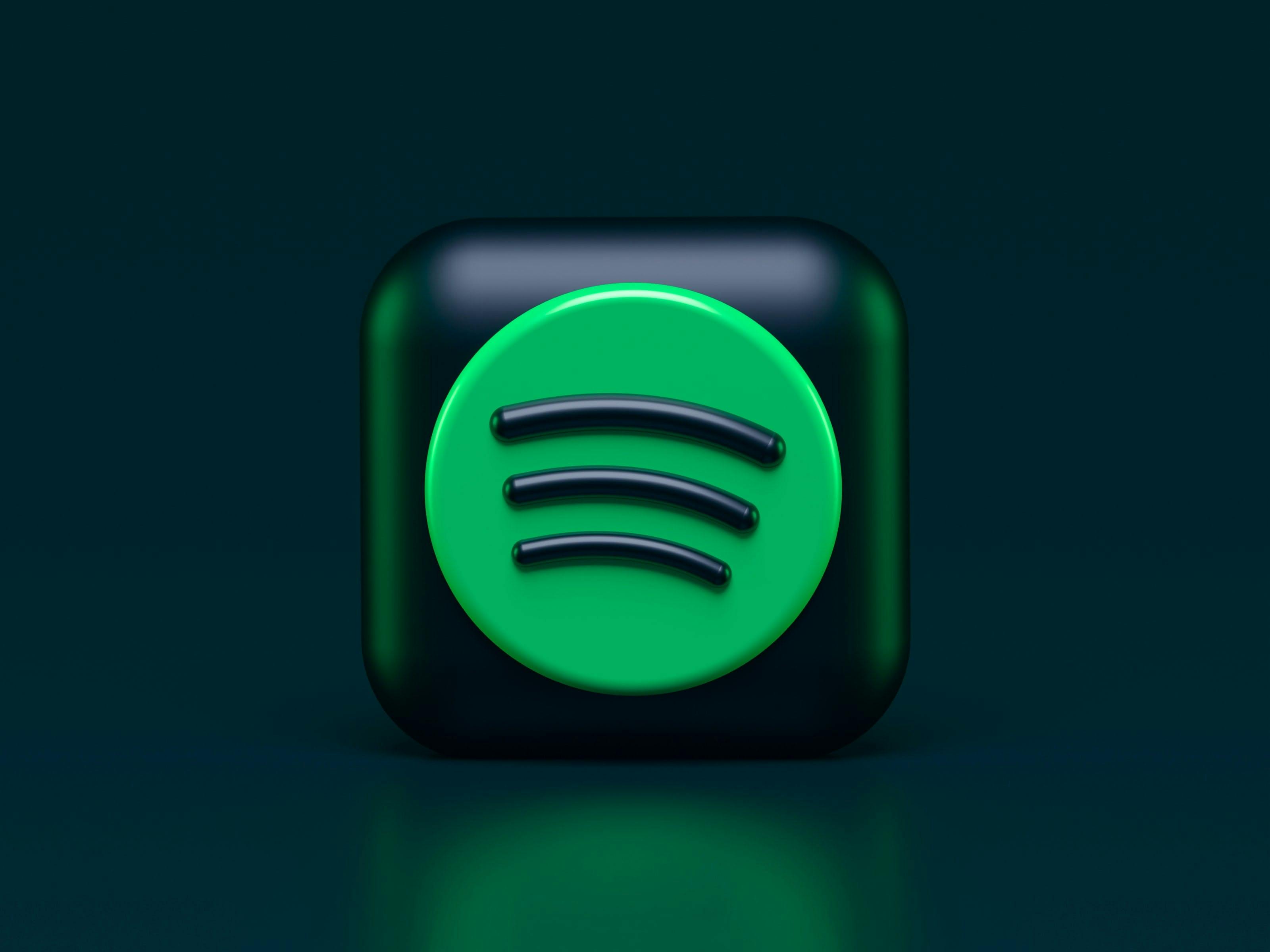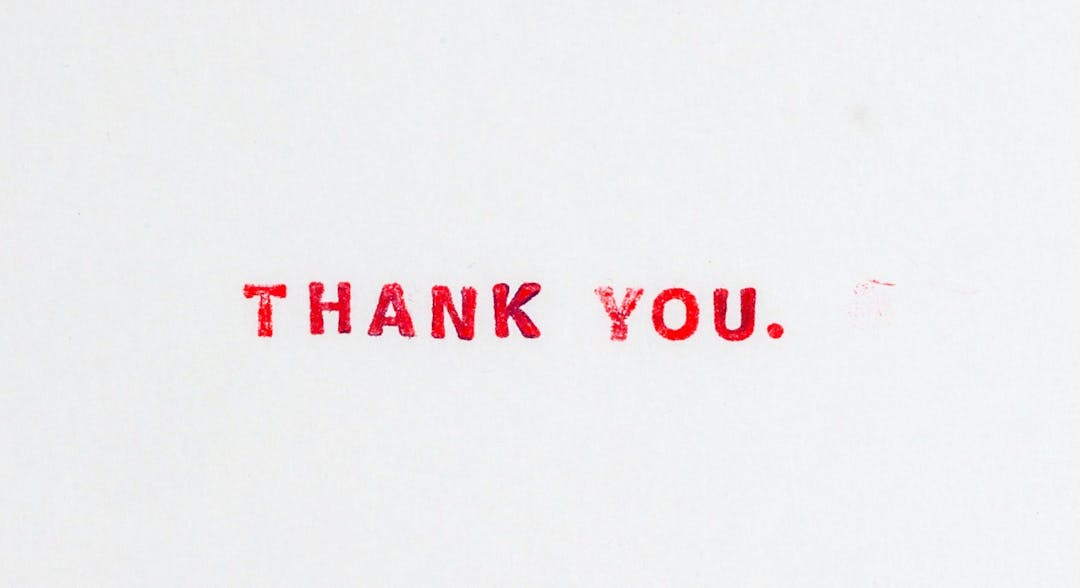The Behavioral Science Behind Spotify Wrapped’s Viral Success
It’s December once again, a most special time of year for many of us. We have so much to look forward to in just one month: beloved holidays like Christmas and Hanukkah, New Year’s Eve, and of course, the release of Spotify Wrapped.
In case you’ve somehow missed the boat on this cultural phenomenon, Spotify Wrapped is an annual campaign where users of the music-streaming platform can view a dolled-up summary of their listening data over the past year, set to snippets of their favorite tracks. The 2021 version also includes new features such as personalized audio “auras” (a visual representation of one’s musical personality, akin to what would happen if you spilled some watercolor paint everywhere and took a blurry photo of the result), quizzes about the user’s own listening habits (“True or false: BTS was your most-binged artist”), and more.
Since its inception, the campaign has become an event in its own right, and has proven very successful in promoting Spotify as a platform. In 2020, Spotify downloads increased by 21% in the first week of December, and 90 million people engaged with the campaign that year.1 Wrapped has been described as a “best-in-class marketing campaign,” won multiple Webby awards, and is constantly being used as a case study of how to market successfully in the digital age.2 The tweets below are only a drop in the tsunami of content produced about Wrapped each year.
Happy Spotify Wrapped Day to all who celebrate <3
— grant👨🏻🦱 (@urdadssidepiece) December 1, 2021
SPOTIFY: your top artist this year, was actually one of the famous popular musicians that there are. Top song was their most popular song
— jeremy levick (@jeremylevick) December 2, 2020
ME: this thing is so cool
All this success has not come without its share of backlash. Some have criticized the campaign for promoting the superficial broadcasting of taste rather than the actual enjoyment of music, while others claim it’s a great example of just how comfortable we’ve become with the surveillance of our personal behaviors.3,4
Still, millions of us go nuts for Spotify Wrapped. So why are we so obsessed with an annual reveal of our own listening data? Read on for some behavioral perspectives on the Spotify Wrapped hype, and what this phenomenon can tell us about consumer behavior in 2021.
Behavioral Science, Democratized
We make 35,000 decisions each day, often in environments that aren’t conducive to making sound choices.
At TDL, we work with organizations in the public and private sectors—from new startups, to governments, to established players like the Gates Foundation—to debias decision-making and create better outcomes for everyone.
1. It’s personalization done right
In the age of big data, personalization has quickly become a must-have for tech products. But it needs to be used carefully. Good personalization meaningfully improves the user’s experience in one way or another; bad personalization can annoy them, creep them out, or even make them feel they’ve been stereotyped. (TDL staff writer Preeti Kotamarthi has detailed the do’s and don’ts of personalization here.)
Spotify Wrapped is decidedly an example of personalization done right. It’s not throwing around data and metrics just for the heck of it; instead, it keeps the spotlight on the users themselves and focuses on the parts of the Spotify experience which users genuinely value.
For many of us, music is a big fixture of our self-concepts, and a core part of Spotify’s value as a service is that it provides a venue for identity exploration and discovery. Spotify Wrapped, then, is a very clever way of repackaging our peak experiences with the service and delivering them back to us (in an aesthetically pleasing package to boot). Ultimately, through Wrapped, Spotify is subtly reminding us of the specific ways we benefit from using the platform, and insinuating itself into the fond memories and associations we hold for our favorite music.
The other key reason that Spotify Wrapped works so well is that it validates our conceptions of ourselves as individuals. While most of us appreciate the various other examples of personalization on the platform, such as curated song recommendations, these don’t get nearly the same recognition as Spotify Wrapped. Why? Because Wrapped feels like a completely unique reflection of who we are. Features like auto-generated playlists are useful, but you can see the algorithmic thumbprints on them; they’re not just for you, per se. But nobody else on the planet will have the same Spotify Wrapped as you.
The moral of the story: people like to feel special and unique, and features that help them get there tend to be well received.
2. It turns music into a game
Gamification is the practice of “adding game-like elements to a non-game environment.” It’s a trend that’s permeated countless industries and organizations, and Spotify is no exception.
Music has always had an element of competition to it — just think of all the self-proclaimed superfans and the archetypal gatekeepers who will challenge you to “name 5 of their albums” if you dare to casually enjoy their favorite band. Spotify has long been integrating this desire to signal superior taste into the architecture of their platform, and Wrapped is one of their key tools for doing so. By showing listeners how they stack up compared to others — for example, by awarding “top 1%” status to the biggest listeners of a particular artist — they create a sense of exclusivity, status, and leadership (although this has led some users to be more confused than pleased).
In addition to competing with others, Spotify Wrapped spurs users to compete with their past self, by comparing their year-on-year metrics. Through messages such as “You listened to 94% more minutes than last year — talk about overachieving!” Wrapped motivates users to engage with the platform even more in the future, to set new “personal bests.”
Since 2020, Wrapped has achieved a whole new level of gamification by adding literal games, including the true-or-false quizzes mentioned above. All of these features are of course beautifully packaged in a way that is best suited to demonstrate your musical engagement to others.
3. It’s got an element of surprise
Since its inception, Spotify Wrapped has been released in early December. However, the exact release date is kept secret until the launch, which helps to build anticipation. Spotify users know they will be rewarded for using the platform throughout the year (with their own data), but not knowing exactly when it will come makes Wrapped’s arrival even more exciting.
Case in point: In the final week of November this year, tens of articles were released with some variation on the title “When does Spotify Wrapped come out?” (You may have even heard this question being asked amongst friends, while the one person who uses Apple Music stands in a corner and weeps.) Google searches for “Spotify Wrapped” also started to spike as we approached the end of November.

Data courtesy of Google Trends
The second element of surprise comes from not knowing what your Wrapped will tell you about yourself. If you spent the past few weeks listening exclusively to Taylor Swift’s rerecording of RED or Adele’s 30, this may not apply to you, but for most listeners, Spotify Wrapped truly feels like receiving a gift whose contents are unknown. This is important: streaming platforms have previously given users access to data on their own listening stats, as well as charts cataloging the success of popular artists, but according to some researchers, surprising vs. unsurprising pleasures are not created equal.
According to neuroscientist Gregory Berns, the brain’s pleasure centers react more strongly when pleasures are unexpected.5 So while platforms like iTunes (RIP) may have allowed us to briefly bask in our own exquisite musical taste, having that superior taste confirmed (or not) just once a year — with a lot of fanfare attached — adds extra fun.
4. All the cool kids are doing it
On the surface, Spotify Wrapped is all about us as individuals. But at its core, this campaign is a social exercise. Formatted to fit perfectly in one’s Instagram stories, this feature is designed to spur users to share. And share they did — so much so that Spotify Wrapped has come to feel like a bonafide holiday season tradition for many.
The widespread popularity of Spotify Wrapped gives rise to the bandwagon effect, our tendency to, well, hop on the bandwagon and do what everyone else is doing. The bandwagon effect explains why we succumb to online trends: our inherent need to “fit in” and feel like a part of the majority, coupled with our fear of missing out on the fun, makes it hard to resist sharing our Wrapped stats on social media when all our friends are doing so. This cycle is also self-perpetuating. The more we see others posting their reports, the more Spotify Wrapped becomes a social norm, which makes us feel even less inhibited from participating. (More on that below.)
Finally, as alluded to above, Spotify Wrapped also leverages social norms when it provides us with normative feedback on our behavior (for instance, your percentile ranking among listeners of your favorite artist). Becoming aware of these benchmarks could in turn influence how we act going forward.
5. It gives us an excuse to share
Disclosing important parts of ourselves is highly rewarding, and is the bedrock of our most cherished relationships — we all crave authentic connection with others, and we all want to be seen for who we “truly” are. But self-disclosure also comes with risks.6 Those who overshare (on social media or in the “real world”) can be perceived as “narcissistic, mundane, irritating, or problematic” by their peers.7
These risks often hold us back from sharing with others. Even though most of us love to talk about ourselves, our interests, and the precise number of times we’ve streamed “Butter” by BTS (undeniably their best English-language single), we often refrain in the interest of adhering to social norms.
But as we’ve established, the popularity of Spotify Wrapped has shifted these norms. While there may be some vocal haters of Spotify Wrapped, broadly speaking, it’s a very well-loved campaign, and its ubiquity has served as a kind of social cover: it gives us an excuse to publicly display important parts of ourselves while shielding us from judgment. (At least, from certain kinds of judgment.)
6. It plays to our love of narratives
Spotify Wrapped usually comes out at a time of significant change. The weather is getting colder, school semesters are drawing a close, and New Year’s Eve is right around the corner. In these times of significant change, we tend to slip into nostalgia.
Nostalgia, defined as the sentimental recollection of the past, is a highly valuable psychological phenomenon. While it can feel bittersweet from time to time, psychological research has found that it is a positive emotion that improves our mood, helps us feel connected to others, and generally boosts our self-esteem. Music has proven to be a key vessel for nostalgia, especially if the songs are “autobiographically salient, arousing, [and] familiar.”8
Music and “main-character energy”
Throughout the year, and in our lives in general, we tend to view ourselves as the main character in an unfolding story. Psychologists call this our “narrative identity”: the idea that we build our sense of self by sewing together the details of our lives into a coherent story.9,10
More specifically, we use our reconstruction of the past, our present, and our imagined future to provide our lives with meaning and purpose. In a sense, we are all the authors of our own autobiographies. And, like any good story, our lives are filled with characters, events, settings, themes, and importantly, soundtracks.
Spotify Wrapped ties nostalgia and narrative identity together quite eloquently. While our tastes, hobbies, and habits may greatly change over the years, the “mental time travel” we experience while listening to our favorite tunes from years past will always take us back to our emotional peaks and valleys. Reflecting on these nostalgic songs is comforting, as we can fondly remember that previous chapter of our lives and see how our story has evolved from there.
In essence, Spotify Wrapped reaffirms the psychological conception of our lives as narratives, tying together the person you were at the start of the year with your current self. Listening to the soundtrack from previous episodes of our lives reminds us that we still have room for growth and new experiences in our unfolding hero’s journey. This can be a powerful salve for the anxiety we may feel in an unpredictable, changing world.
7. It builds excitement for the future
Finally, by launching at the end of the calendar year, Spotify Wrapped piggybacks on our anticipation of new beginnings, prompting us to think about our future.
Researchers have shown that temporal landmarks influence aspirational behavior: the “fresh-start effect” describes how individuals are more likely to pursue goals (such as following a diet or starting a gym routine) after some key date has passed. A potential explanation is that temporal landmarks distance us from the imperfections of our past selves and allow us to focus on improving our future selves.11,12
Just as it spurs us to look back, Spotify Wrapped also encourages us to look forward to the new year, imagining how we may want to change or do things differently. In this way, it may prompt us to set new goals. These may be related specifically to our listening habits (e.g. “I will listen to more educational podcasts”), but they could also extend to our wider aspirations (e.g. “I will go to the gym more often, and I’ll set up a great playlist to motivate myself”).
That’s a wrap
In an age where consumers are, quite simply, sick and tired of being advertised to,13 Spotify Wrapped is one of those rare marketing initiatives that manages not only to avoid drawing users’ ire, but to bring them genuine delight. It’s also bucked the trend of mounting backlash to corporate mining of consumer data,14 suggesting (for better or for worse) that users are still willing to accept surveillance in exchange for something they value. That may be an ego boost, social connection, the chance to reflect and marinate in nostalgia, or a combination of all of these.
That said, only time will tell how long the Spotify Wrapped craze can continue. This December, five years after the very first Wrapped hit our devices, one could detect a hint of weariness in social media users’ reactions to the latest iteration of the campaign. Perhaps most notable: the text that accompanied each screen of Wrapped 2021 was trying just a little too hard to emulate teen internet-speak (“You always understood the assignment”; “You deserve a playlist as long as your skincare routine”), and it rubbed people the wrong way. Even The New York Times demanded to know when “Spotify Wrapped [got] so chatty.”
Things move fast on the Internet, and not even a cultural phenomenon as massive as Spotify Wrapped is guaranteed longevity. As more and more companies try to recreate the success of Wrapped, we will soon see whether the public becomes disillusioned or bored. Will other companies reach the heights of Spotify Wrapped, or will consumers move on before they get the chance?
We can’t say for sure, but for now, we wish a very merry Wrapped season to all who celebrate, and we hope you were pleased with your results.
Katie MacIntosh takes sole responsibility for all BTS references in this article.
References
- Jain, P. (2021, June 27). How Spotify Wrapped 2020 Marketing Campaign Boosted Mobile App Downloads And Engagement. MoEngage. https://www.moengage.com/blog/spotify-wrapped-2020-app-downloads-engagement/&sa=D&source=docs&ust=1639682210485000&usg=AOvVaw3RbnZCziHhVEZ4riBktLdB
- Morgan, P. (2020, December 22). Spotify wrapped: A best-in-class marketing campaign. Metia. https://metia.com/blog/spotify-wrapped-a-best-in-class-marketing-campaign/
- Hunt, E. (2021, December 1). Spotify wrapped is free advertising that says nothing about the joy of music. The Guardian. https://www.theguardian.com/music/2021/dec/01/spotify-wrapped-is-free-advertising-that-says-nothing-about-the-joy-of-music
- Metz, R. (2021, December 2). Spotify wrapped shows how our personal data gets sliced and diced. CNN. https://www.cnn.com/2021/12/02/tech/spotify-wrapped-data/index.html
- Franzen, H. (2001, April 16). Neuroscientists learn why some people like surprises. Scientific American. https://www.scientificamerican.com/article/neuroscientists-learn-why/
- Ma, X. (2015). Anonymity, intimacy and self-disclosure in social media. AEA Randomized Controlled Trials. https://doi.org/10.1257/rct.840
- Radovic, A., Gmelin, T., Stein, B. D., & Miller, E. (2017). Depressed adolescents’ positive and negative use of social media. Journal of Adolescence, 55, 5-15. https://doi.org/10.1016/j.adolescence.2016.12.002
- Barrett, F. S., Grimm, K. J., Robins, R. W., Wildschut, T., Sedikides, C., & Janata, P. (2010). Music-evoked nostalgia: Affect, memory, and personality. Emotion, 10(3), 390-403. https://doi.org/10.1037/a0019006
- McAdams, D. P. (2011). Narrative identity. Handbook of Identity Theory and Research, 99-115. https://doi.org/10.1007/978-1-4419-7988-9_5
- Hong, E. K., Sedikides, C., & Wildschut, T. (2021). How does nostalgia conduce to global self-continuity? The roles of identity narrative, associative links, and stability. Personality and Social Psychology Bulletin, 014616722110248. https://doi.org/10.1177/01461672211024889
- Dai, H., & Li, C. (2019). How experiencing and anticipating temporal landmarks influence motivation. Current Opinion in Psychology, 26, 44–48. doi:10.1016/j.copsyc.2018.04.012
- Dai, H., Milkman, K. L., & Riis, J. (2014). The Fresh Start Effect: Temporal Landmarks Motivate Aspirational Behavior. Management Science, 60(10), 2563–2582. doi:10.1287/mnsc.2014.1901
- The advertising industry has a problem: People hate ads (Published 2019). (2019, October 28). The New York Times – Breaking News, US News, World News and Videos. https://www.nytimes.com/2019/10/28/business/media/advertising-industry-research.html
- The trust opportunity: Exploring consumer attitudes to the Internet of things. (2019, May 1). Internet Society. https://www.internetsociety.org/resources/doc/2019/trust-opportunity-exploring-consumer-attitudes-to-iot/
About the Authors
Maria Fomina
Maria is a Summer Associate at The Decision Lab whose main interests lie at the intersections of health and behavioral science. She has recently completed an undergraduate degree at the University of Toronto, majoring in global health and psychology, and minoring in immunology. Before joining TDL, Maria helped start Doctrina, the educational program of Pendance film festival. In her free time, she does translations for the Rylkov Foundation for Health and Social Justice, an NGO promoting a humane drug policy in Russia.
Triumph Kerins
Triumph is passionate about understanding how human behavior influences our world. Whether it be global macroeconomics or neural networks, he is fascinated by how complex systems work, as well as how our own behavior can help create, sustain, and break these systems. He is currently pursuing a Bachelor’s degree in Economics and Psychology at McGill University, attempting to design an interdisciplinary approach to better understand all the quirks that make us human. He has experience in non-profit consulting, journalism, and research. Outside of work, you can find Triumph playing bass guitar, gardening, or down at a local basketball court.
Katie MacIntosh
Katie MacIntosh is Lead Editor at The Decision Lab. She is interested in the intersection of behavioral science, culture, and new communication technologies. Before joining The Decision Lab, she contributed to research on the neurochemical bases of memory and the social psychology of the internet. An aspiring polyglot, she has studied a number of languages, including as an exchange student in Germany, Japan, and South Korea. Katie graduated from the University of Toronto with a Bachelor of Science in psychology and linguistics.
Kaylee Somerville
Kaylee is a research and teaching assistant at the University of Calgary in the areas of finance, entrepreneurship, and workplace harassment. Holding international experience in events, marketing, and consulting, Kaylee hopes to use behavioral research to help individuals at work. She is particularly interested in the topics of gender, leadership, and productivity. Kaylee completed her Bachelor of Commerce degree from the Haskayne School of Business at the University of Calgary.








